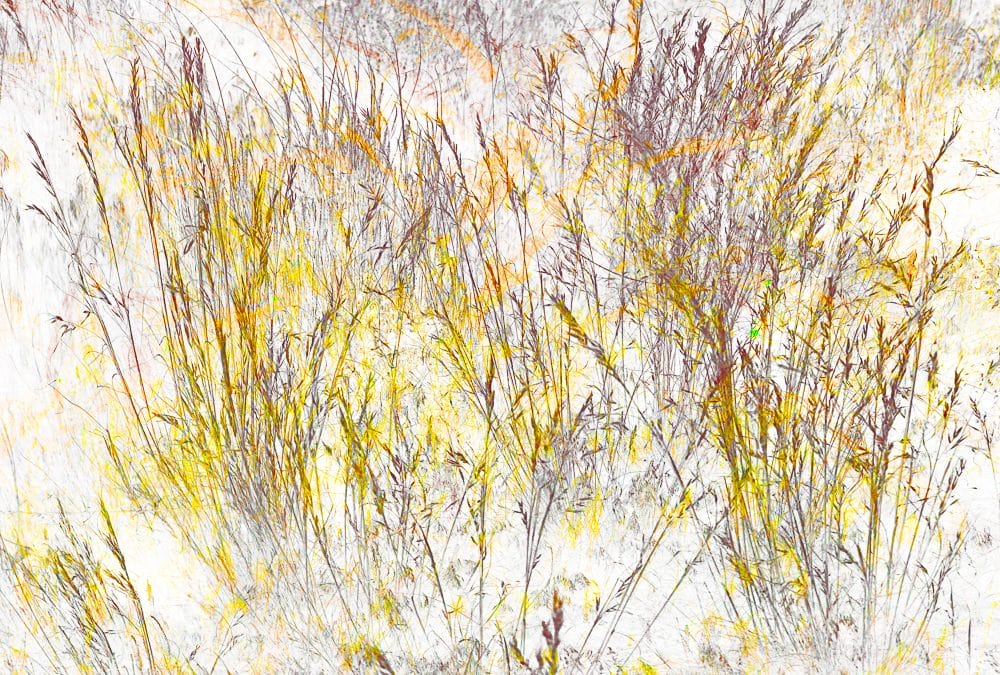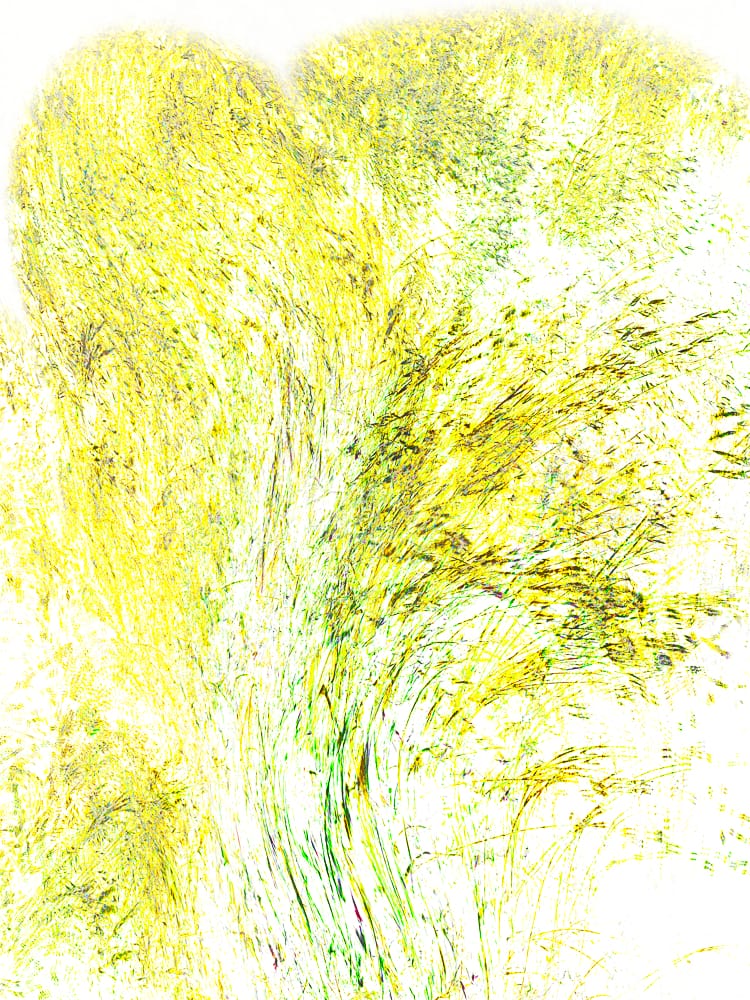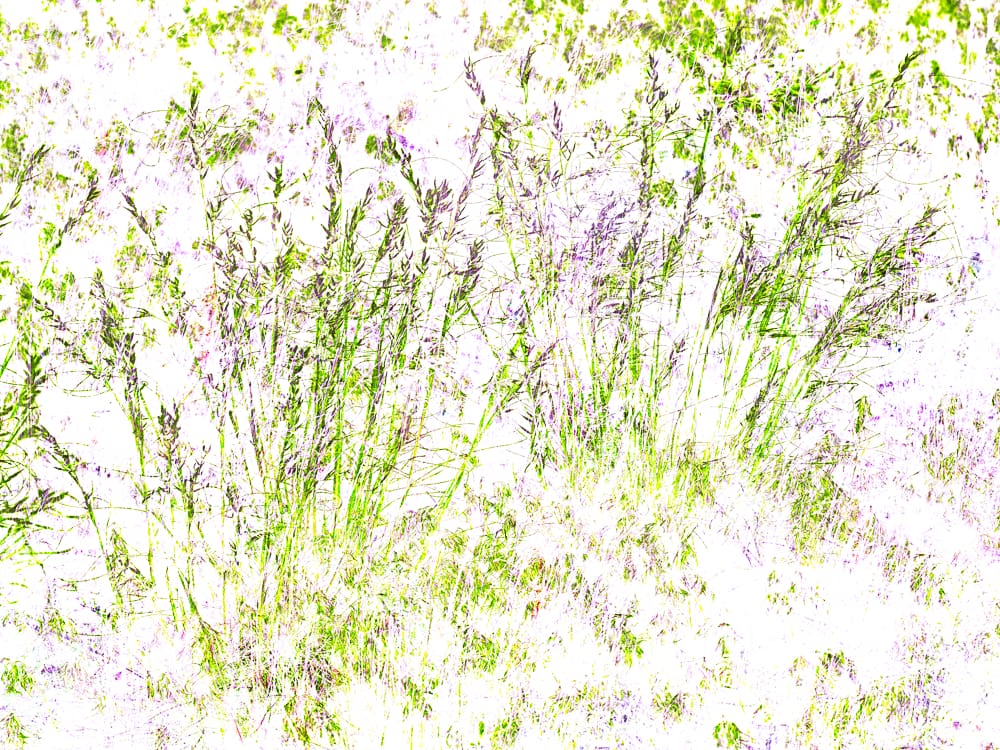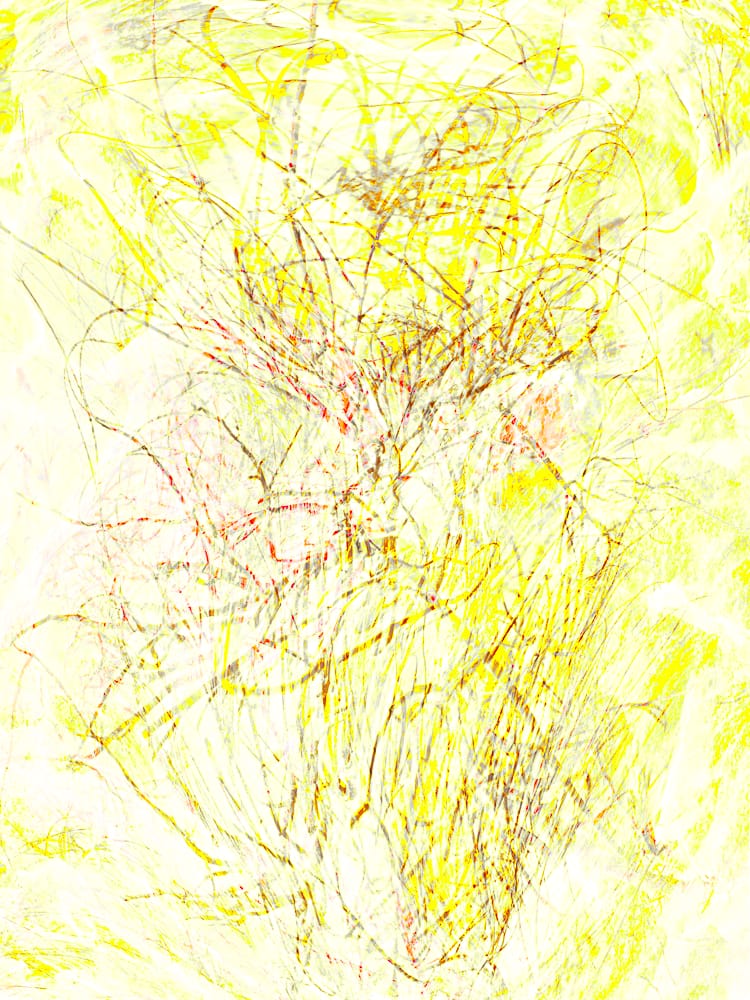What is Abstract Landscape Photography?
Abstract landscape photography takes photographs away from the readily recognizable world we live in. It creates an image that may have elements in it that are recognizable, like grass, mountains, bushes, and sand dunes, but places them in scenes that may not resemble anything like what we have seen before.
Abstract photography of any variety defies the conventional perception that photographs must be representative of the reality we see. It moves photography into the realm of art.
Some people describe an abstract work of art as not having a recognizable context. A picture of a rock on the ground without any reference to a recognizable environment can be considered by some as an abstract work of photography.
At the other end of the spectrum, others say that it is abstract only if there are no elements in the photo that are recognizable as an element from reality.
I like to use the idea of “distance from reality”. This allows a spectrum of works of abstract art.
- Most photographs are easily identified depictions of reality. In this case, there is no “distance from reality”.
- A close-up of a rock would be a little ways from reality, since we don’t know the broader context of where that rock lives. However we do recognize the element as a rock.
- A great distance from reality is a print that has no elements in it that resemble anything we have seen in nature or the man-made world.
I prefer the idea of distances from reality for my assessment of how abstract a work of abstract landscape art ends up becoming. All of us start with a camera capable of accurately representing reality, so how much “distance from reality” we create in the final image varies by each artist.
How is Abstract Landscape Photography made?
There are three ways to make abstract landscape photography.
Take a picture of something that does not look natural and does not have a broader context. Something like a close-up of the bark pattern on the side of a tree, but not showing the tree. This leaves the viewer questioning what the photograph is showing. Some may recognize it as a bark pattern and others not. Many consider this realistic abstract photography. Some even label it as a close-up or a form of macro photography. Regardless, it makes us question its origin and representations.
Moving the camera while the shutter is open. This results in a blurry image with linear or circular motion artifacts, often conveying an indistinct image of whatever you were recording. This is called intentional camera movement. This takes quite a bit of trial and error to become skilled, but some are moving beyond the bounds of traditional realistic photography and producing marvelous works of art with this as their primary photographic technique.
Stacking multiple images or exposures together. This is called multiple-exposure photography. It can be accomplished in the camera by combining consecutive exposures. Canon, Nikon, Sony, Fuji, and Olympus cameras have this capability. One can stack up to 10 consecutive exposures to generate one image. The second means of multiple exposure photography is to combine multiple images in Photoshop after the field session. This latter technique allows for much greater artistic freedom in processing and composition. It is the technique I use exclusively.
Grasses 5 from the Grasses series
My form of Abstract Landscape Photography
I almost exclusively create my abstract landscape photographic prints using multiple images after my time. I have much greater artistic license to choose which images to work with and take further. I also have much greater freedom to alter the elements in the final image to what I want.
This method is the least limiting and most freeing method of creating abstract landscape photography.
What forms do my Abstract Landscape Photography come in?
They come in:
- Prints only – pigment inks on 100% cotton or linen papers for permanence and beauty
- Matted prints – the same prints with a white or cream archival mat ready for framing
- Canvas wrap – prints on 100% cotton or linen canvas wrapped around a frame for a wall-to-wall experience
Materials used:
- Pigment inks
- Archival paper, either cotton or linen
- Acid-free mat- and foam- board
These features preserve your art and guarantee your enjoyment for years to come. I want my work to be a lasting memory for you.
What is the process of making my Abstract Landscape Photography?
All of my work starts in the field recording images of nature in the American Southwest.
Once I get back to the studio, it will be weeks to months before I start working on that group of images.
I work from memory. I remember the time, place, and feelings and bring them into the piece.
I merge two to four images, blend them in various ways, alter the forms and colors, and in the end, come up with my art.
For every print I show and sell, I will have made 10-15 others that remain studies or experiments.
Grasses 51 from the Grasses series
What color palettes do I like to use in my Abstract Landscape Photography?
This is a common palette:
And this one:
However there is a great variation in my work when choosing colors. I listen to the piece as it evolves in order to present a certain mood or feeling.
I shy away from heavily or fully saturated colors as they seem to slap me in the face a bit more than desired.
How I came to become an abstract landscape photographer
For more than half of my photographic journey, I produced realistic photography. Then one winter night I suddenly (in my head) said, “Phooey!! I am tired of my pictures looking like everyone else’s! I want to express something more!”
After that divergent moment, I went off the reservation of only producing realistic photographs and progressively moved into the world of abstract landscape photography. The long version of the story can be found here.
What subjects do I like to use in my Abstract Landscape Photography?
Linear objects, like
- grasses
- cracks in rocks
- tree trunks
- lines in clouds
- lines in sand dunes
- stream beds
- patterns of erosion
Fields of similar objects that convey a texture and similar color, like
- fields of grasses or bushes,
- rock piles
- cracks in a dried stream bottom
- water
Distinct objects, like
- mesas
- plateaus
- deep gorges
- unusual ridges
- distinct erosions
- unusual clouds
Colorful areas, like
- colored clay layers in the side of a hill
- colors on the walls of canyons
- sky colors in the morning and evening
- areas of unusual light
Petroglyphs and pictographs
Grasses 13 from the Grasses series
What feelings and emotions do I like to explore in my Abstract Landscape Photography?
- Movement
- Suspense
- Wonder
- Awe
- Attraction
- Invitation
- Surprise
- Gratitude
- Rest
- Contemplation
Who prints my Abstract Landscape Photography?
I print all my own work after processing and selecting the final ones to share or sell. In print sizes greater than 17” x 23”, I have a relationship with a custom printer who follows my directions in the printing process to create larger pictures.
How to purchase my Abstract Landscape Photography
My work can be purchased on this site as well as directly in various art shows around the Front Range area of Colorado.
Sign up for notifications of shows, new work, and posts about my art journey and to share yours.
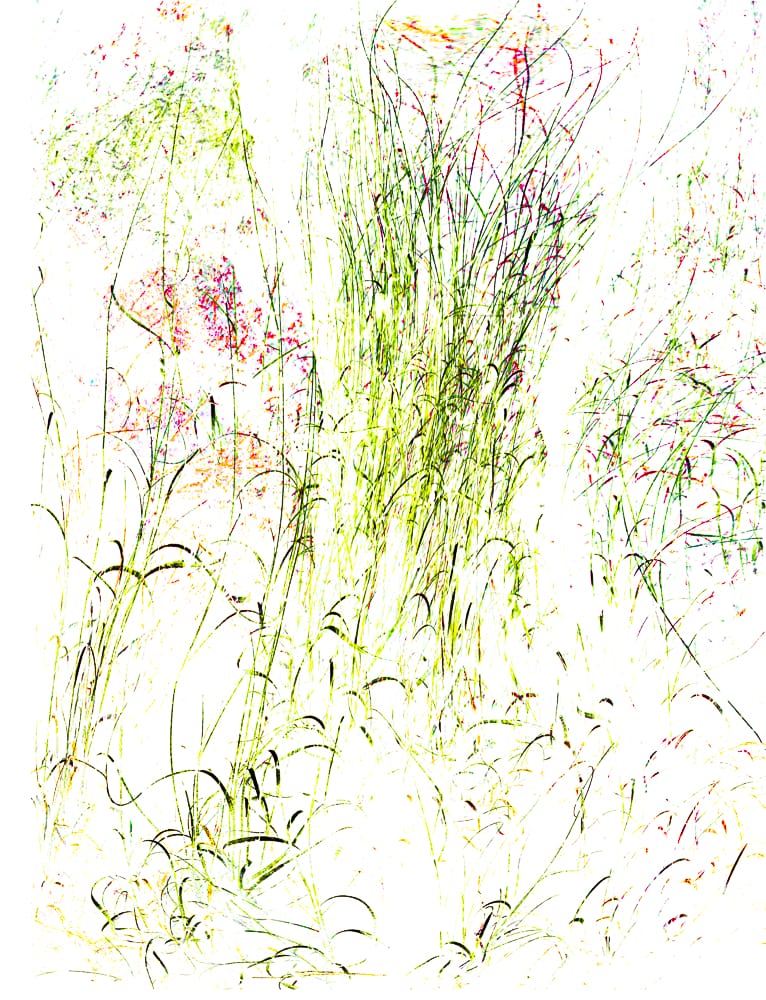 Grasses 8 from the Grasses series
Grasses 8 from the Grasses series

